#Depicting: Famicom Controller II
Explore tagged Tumblr posts
Text
Nintendo Badge Arcade - part 3
So I spent three hours working on this exact project and when I asked a discord to try and see if anyone knew any of the last ones that would be tedious to find, I got sent this link xD
Wariofan63 - Absolutely amazing work, as someone who knows what it's like! Thank you so much for documenting this stuff! You're incredible :D
Nintendo Games in the Badge Arcade
Now if you know me, you know that I absolutely love Nintendo games and the one thing I love more than that is a Nintendo game about Nintendo games! Today I’m going to talk about Nintendo Badge Arcade, the free-to-play app you can download for your 3DS. The main draw of the game is that you play crane games to win badges that you can use to decorate your 3DS Home Menu with.
A good chuck of these badges are legacy Nintendo platforms and tagging along with them are tiny pixelated game cartridges. It can be hard to make out, but every single one of them is based on legitimate cartridge art (cart art)!
A couple years ago, I spent some time tracking down what each badge is a minituarized verison of and had a lot of fun doing it, so I made a guide of which games you can adorn your 3DS with.
Oh yeah, one thing to note here is that everything in this set of badges is based on the Japanese designs of the cartridges, so most might not look familiar to how you remember them.
Alright, are you ready? Let’s begin with some easy stuff, the Game & Watch games!
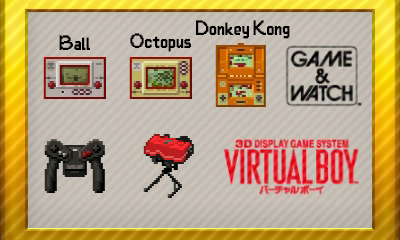
Now you’re playing with power! It’s the Famicom (NES) games! You’ll notice we got some cameos from R.O.B. as well as the controller with the bone-shaped controller.
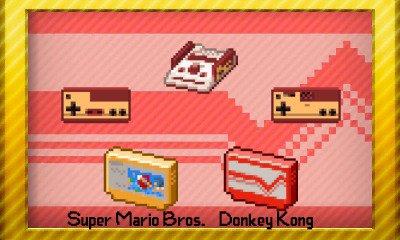
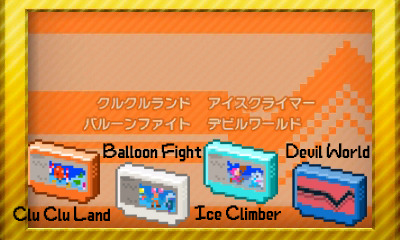
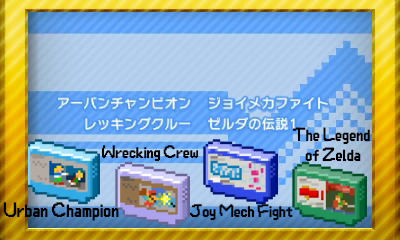
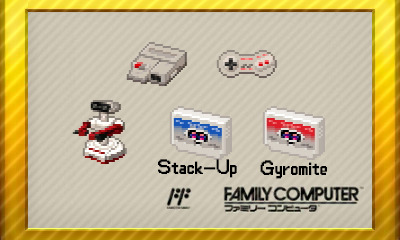
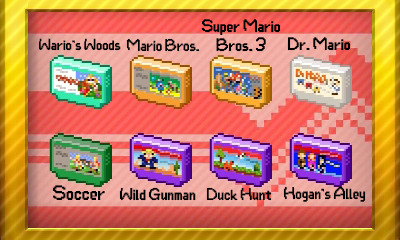

Now for what was the most difficult part for me, the Famicom Disk System games! Unfortunately all of these are Japan-only, so if you were hoping to decorate your 3DS with Zelda 2, I got some bad news or you.
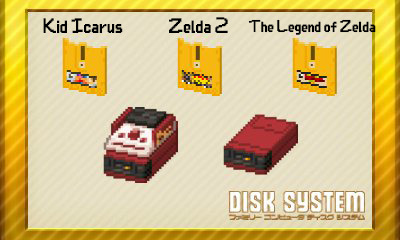

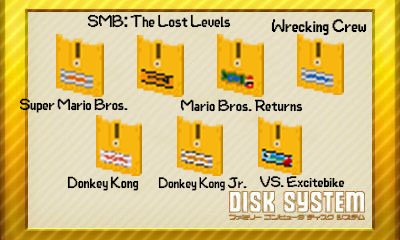

This is going to get a little long so I’ll put the rest under the cut.
Keep reading
#Nintendo Badge Arcade#Depicted by: Nintendo 3DS#Depicting: Game & Watch Ball#Depicting: Game & Watch Octopus#Depicting: Game & Watch Donkey Kong#Depicting: Virtual Boy controller#Depicting: Famicom Controller I#Depicting: Famicom Controller II#Depicting: Famicom#Depicting: Super Mario Bros. Famicom cartridge#Depicting: Donkey Kong Famicom cartridge#Depicting: Clu Clu Land Famicom cartridge#Depicting: Balloon Fight Famicom cartridge#Depicting: Ice Climber Famicom cartridge#Depicting: Devil World Famicom cartridge#Depicting: Urban Champion Famicom cartridge#Depicting: Wrecking Crew Famicom cartridge#Depicting: Joy Mech Fight Famicom cartridge#Depicting: The Legend of Zelda Famicom cartridge
74 notes
·
View notes
Text
Video Games
Today, video games make up a $100 billion global industry, and nearly two-thirds of American homes have household members who play video games regularly. And it’s really no wonder: Video games have been around for decades and span the gamut of platforms, from arcade systems, to home consoles, to handheld consoles and mobile devices. They’re also often at the forefront of computer technology.
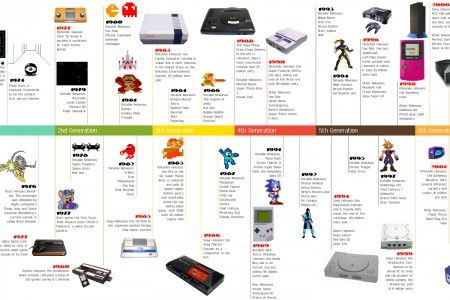
The Early Days
Though video games are found today in homes worldwide, they actually got their start in the research labs of scientists.
In 1952, for instance, British professor A.S. Douglas created OXO, also known as noughts and crosses or a tic-tac-toe, as part of his doctoral dissertation at the University of Cambridge. And in 1958, William Higinbotham created Tennis for Two on a large analog computer and connected oscilloscope screen for the annual visitor’s day at the Brookhaven National Laboratory in Upton, New York.
In 1962, Steve Russell at the Massachusetts Institute of Technology invented Spacewar!, a computer-based space combat video game for the PDP-1 (Programmed Data Processor-1), then a cutting-edge computer mostly found at universities. It was the first video game that could be played on multiple computer installations.
In 1967, developers at Sanders Associates, Inc., led by Ralph Baer, invented a prototype multiplayer, multi-program video game system that could be played on a television. It was known as “The Brown Box.”
Baer, who’s sometimes referred to as Father of Video Games, licensed his device to Magnavox, which sold the system to consumers as the Odyssey, the first video game home console, in 1972. Over the next few years, the primitive Odyssey console would commercially fizzle and die out.
Yet, one of the Odyssey’s 28 games was the inspiration for Atari’s Pong, the first arcade video game, which the company released in 1972. In 1975, Atari released a home version of Pong, which was as successful as its arcade counterpart.
Magnavox, along with Sanders Associates, would eventually sue Atari for copyright infringement. Atari settled and became an Odyssey licensee; over the next 20 years, Magnavox went on to win more than $100 million in copyright lawsuits related to the Odyssey and its video game patents.
In 1977, Atari released the Atari 2600 (also known as the Video Computer System), a home console that featured joysticks and interchangeable game cartridges that played multi-colored games, effectively kicking off the second generation of the video game consoles.
The video game industry had a few notable milestones in the late 1970s and early 1980s.
The Video Game Crash
In 1983, the North American video game industry experienced a major “crash” due to a number of factors, including an oversaturated game console market, competition from computer gaming, and a surplus of over-hyped, low-quality games, such as the infamous E.T., an Atari game based on the eponymous movie and often considered the worst game ever created.
The video game home industry began to recover in 1985 when the Nintendo Entertainment System (NES), called Famicom in Japan, came to the United States. The NES had improved 8-bit graphics, colors, sound and gameplay over previous consoles.
Nintendo, a Japanese company that began as a playing card manufacturer in 1889, released a number of important video game franchises still around today, such as Super Mario Bros., The Legend of Zelda, and Metroid.
Also in 1989, Sega released its 16-bit Genesis console in North America as a successor to its 1986 Sega Master System, which failed to adequately compete against the NES.
With its technological superiority to the NES, clever marketing, and the 1991 release of the Sonic the Hedgehog game, the Genesis made significant headway against its older rival. In 1991, Nintendo released its 16-bit Super NES console in North America, launching the first real “console war.”
The early- to mid-1990s saw the release of a wealth of popular games on both consoles, including new franchises such as Street Fighter II and Mortal Kombat, a fighting game that depicted blood and gore on the Genesis version of the game.
The Rise of 3D Gaming
With a leap in computer technology, the fifth generation of video games ushered in the three-dimensional era of gaming.
In 1995, Sega released in North America its Saturn system, the first 32-bit console that played games on CDs rather than cartridges, five months ahead of schedule. This move was to beat Sony’s first foray into video games, the Playstation, which sold for $100 less than the Saturn when it launched later that year. The following year, Nintendo released its cartridge-based 64-bit system, the Nintendo 64.
Though Sega and Nintendo each released their fair share of highly-rated, on-brand 3D titles, such as Virtua Fighter on the Saturn and Super Mario 64 on the Nintendo 64, the established video game companies couldn’t compete with Sony’s strong third-party support, which helped the Playstation secure numerous exclusive titles.
Modern Gaming
The 8th and current generation of video games began with the release of Nintendo’s Wii U in 2012, followed by the Playstation 4 and Xbox One in 2013. Despite featuring a touch screen remote control that allowed off-TV gaming and being able to play Wii games, the Wii U was a commercial failure—the opposite of its competition—and was discontinued in 2017.
In 2016, Sony released a more powerful version of its console, called the Playstation 4 Pro, the first console capable of 4K video output. In early 2017, Nintendo released its Wii U successor, the Nintendo Switch, the only system to allow both television-based and handheld gaming. Microsoft will release its 4K-ready console, the Xbox One X, in late 2017.
With their new revamped consoles, both Sony and Microsoft currently have their sights set on virtual reality gaming, a technology that has the potential to change the way players experience video games.
1 note
·
View note